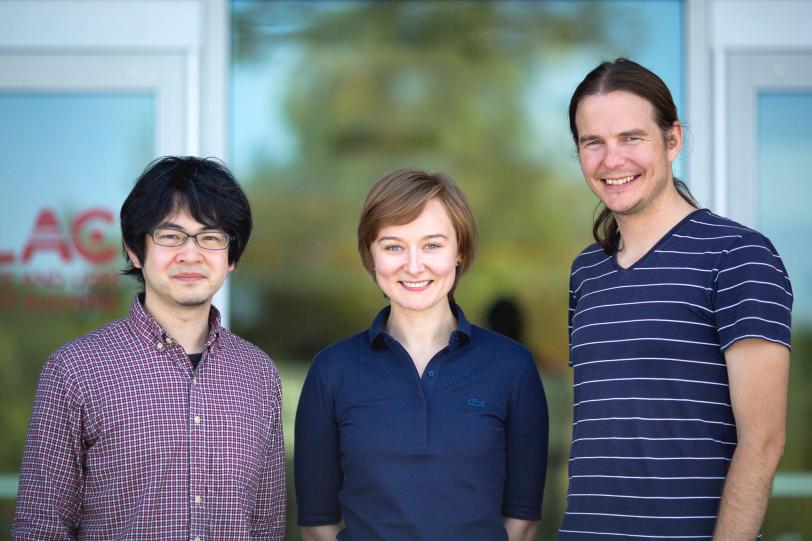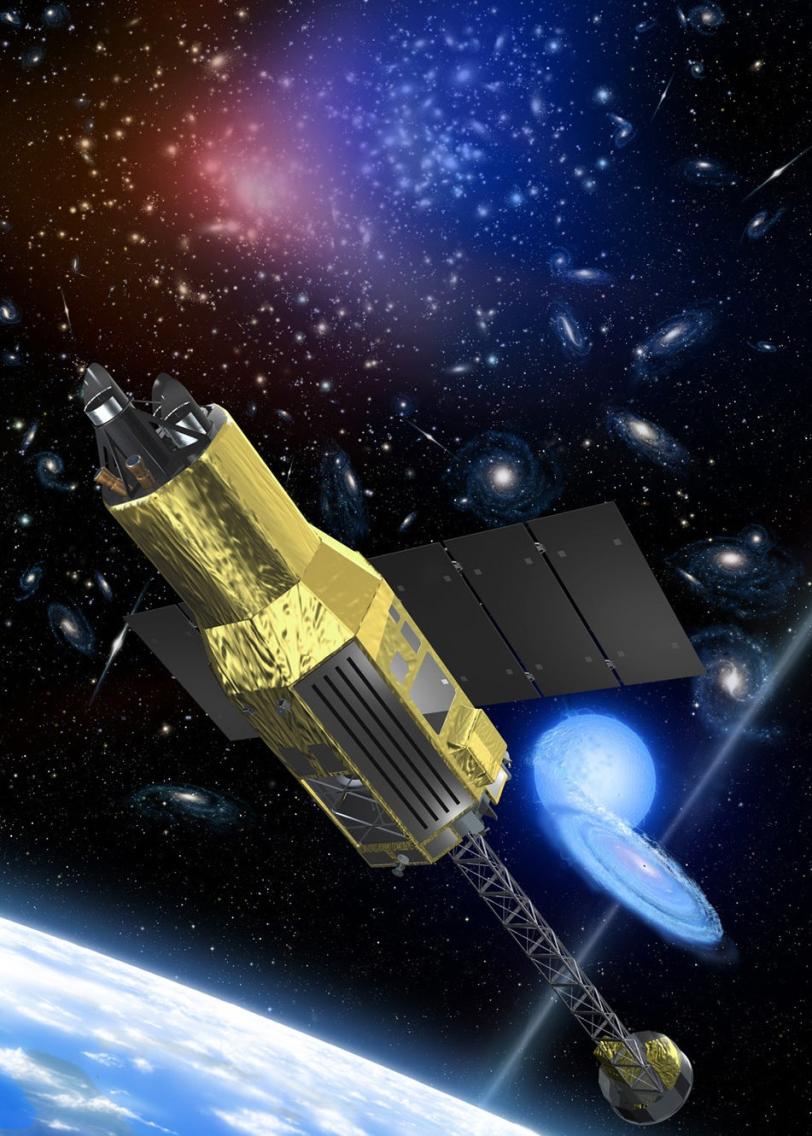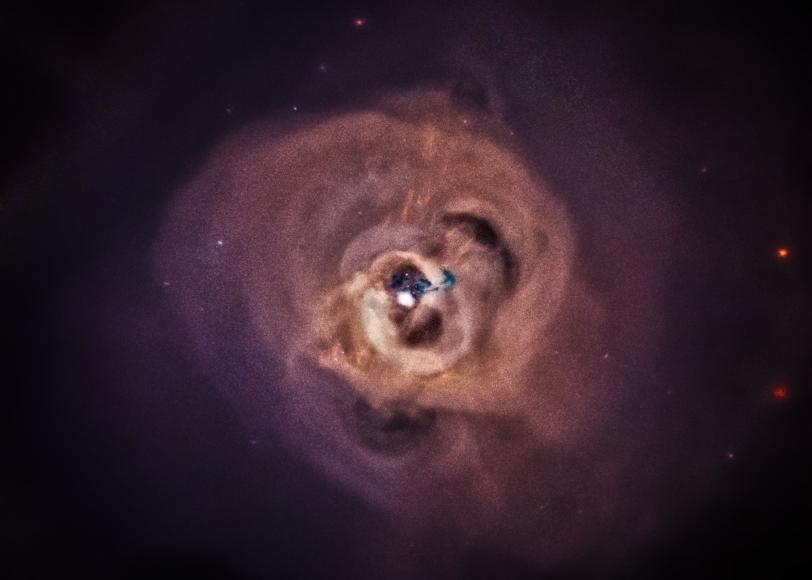Q&A: Hitomi Researchers Talk About the X-ray Satellite’s Tragic End and the Data It Sent Home
Spacecraft’s Legacy May Help Answer Big Questions in Astrophysics
Although researchers are mourning the loss of Hitomi, the Japanese satellite that was meant to become the most sensitive X-ray eye in the sky, they are also excited about the legacy it left behind: one month worth of data taken and sent back to Earth before the mission’s tragic end.
The Japanese Aerospace Exploration Agency (JAXA) announced on April 28 that it will cease all efforts to restore operation of its spacecraft, formerly known as ASTRO-H, to which it lost contact on March 26, just a little over a month after the launch.
The space observatory was scheduled to collect the best X-ray signals yet of hot gas in galaxy clusters, particle streams emerging from black holes, remnants of gigantic star explosions and more – data that would have provided new insights into many aspects of astrophysics and cosmology for years to come.
In this Q&A, three researchers from the Kavli Institute for Particle Astrophysics and Cosmology (KIPAC), a joint institute of Stanford University and the Department of Energy’s SLAC National Accelerator Laboratory, explain the circumstances of Hitomi’s tragic accident and express their hopes for future X-ray satellite missions.
Postdoctoral researcher Irina Zhuravleva and research associate Norbert Werner are part of a team that is analyzing data from Hitomi’s Soft X-ray Spectrometer (SXS). Research associate Hirokazu Odaka is working with data from the Soft Gamma-ray Detector (SGD), which was partially developed at KIPAC.
How are you feeling, now that Hitomi is officially lost?
Werner: Everyone is very sad, of course. Hitomi was supposed to be the main X-ray space mission for the next decade, and its instruments were designed to answer a number of big questions in astrophysics. Hitomi’s capabilities became clear immediately after the start of the mission. Back in March, Irina and I were in Japan as members of the “first light” team that analyzed the first data from the SXS instrument. The data were just beautiful, and the entire team was extremely excited about them. I can say that working on these data has definitely been the peak of my science career so far. Then, 24 hours after we had a team celebration, the satellite didn’t call back. Receiving the bad news was a deep fall from happiness.
Tell us more about the first data.
Werner: The data were taken during Hitomi’s first month in orbit, when everything was still working as planned. During that time, we pointed the SXS instrument at the Perseus cluster, the brightest cluster of galaxies in the X-ray sky. One of our goals was to determine how fast hot gas moves in the space between galaxies, which affects how stars form and the universe evolves. We know that black holes somehow pump energy into this hot intergalactic medium, preventing it from cooling and forming stars. We have submitted a research paper on the results for publication, and they should be made public very soon.
Zhuravleva: Other missions like NASA’s Chandra X-ray Observatory and the European Space Agency’s XMM-Newton looked at the Perseus cluster before, but their instruments didn’t have sufficient energy resolution to study the dynamics of the intergalactic medium. Hitomi’s high-resolution SXS instrument revealed these speeds for the first time. It’s fair to say that these first data demonstrated what’s possible in this field and gave us a taste of the great science that should have come out of the mission over the years.
Were you lucky to get the data right away, or was it planned?
Zhuravleva: It was part of our observation strategy to look at interesting astrophysical objects right after the launch, even before the initial operation and calibration period began. It was a lesson learned from previous failed attempts to bring an SXS-like instrument into space. In 2000, JAXA’s ASTRO-E mission suffered a rocket failure during lift-off. Its successor mission, ASTRO-E2 or Suzaku, was successfully launched in 2005, but it lost the coolant for its high-resolution spectrometer in orbit and no data were taken. This time we wanted to make sure to get data as soon as possible in case something bad should happen down the road.
What exactly happened to Hitomi?
Odaka: JAXA has released a detailed description of the events, but this is briefly what happened: After about a month in space, Hitomi was changing its pointing direction between two observations when a chain of technical malfunctions occurred. A failure of the satellite’s position trackers led to the determination that Hitomi was rotating, which actually wasn’t true. The control system tried to correct for the falsely detected motion, causing an actual rotation of the spacecraft. Then, the on-board computer interpreted this as a dangerous situation and switched into safe-hold mode, which involves repositioning the satellite in a way that its solar paddles face the sun, making sure that it receives enough solar power. This is when a second major error occurred. The repositioning is done by small rockets known as thrusters, which fired in a wrong way so that Hitomi now began rotating rapidly. The rotation became faster and faster, eventually exceeding design limits and causing the separation of the solar paddles and other parts from the satellite. Without the solar paddles in place there is absolutely no hope any more to regain control over Hitomi.
What’s next for X-ray science in space?
Odaka: First of all, the results we have submitted for publication are only part of the data we obtained before the accident. There is much more science to be done, and the analysis teams are looking into how to get the most out of the data. There will definitely be more papers in the future. For instance, I’m part of the team that is analyzing data from the SGD instrument, which was designed to measure the polarization of X-rays, a property that provides insights into the shape of X-ray sources and their magnetic fields. We hope for interesting results from our observation of the Crab Nebula during Hitomi’s first month in space.
Zhuravleva: It is difficult to predict what will happen with regard to future X-ray space missions. Hitomi gave us extraordinarily rich data in a very short amount of time, making clear what we can achieve in the field. We all hope that this will convince the international community to build another satellite. We already know how to build it.
For questions or comments, contact the SLAC Office of Communications at communications@slac.stanford.edu.
SLAC is a multi-program laboratory exploring frontier questions in photon science, astrophysics, particle physics and accelerator research. Located in Menlo Park, Calif., SLAC is operated by Stanford University for the U.S. Department of Energy's Office of Science.
SLAC National Accelerator Laboratory is supported by the Office of Science of the U.S. Department of Energy. The Office of Science is the single largest supporter of basic research in the physical sciences in the United States, and is working to address some of the most pressing challenges of our time. For more information, please visit science.energy.gov.








